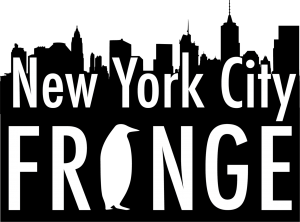
New York City Fringe (formally the FRIGID Fringe Festival) is an open, lottery-based theater festival that gives artists an opportunity to let their ingenuity thrive in an environment that values freedom of expression and artistic determination. In true support of the Indie Theater Community, 100% of box office proceeds go directly to the artists whose work is being presented.
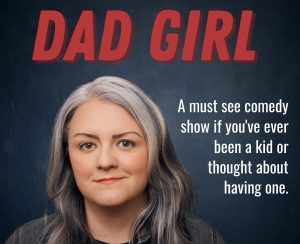
Dad Girl
Emily Walsh is a straight woman. Watching Harrison Ford in Air Force One confirmed that. She does, however, own enough hammers to “have a favorite one”. This self-proclaimed Dad Girl embraces her womanhood but acknowledges the need to dress like the dad.
This stand up comic monologue covers a good deal of ground. Gender labels provide laughs. Toddler girls play with dolls and change their diapers “while still wearing diapers”. Ms. Walsh notes that she not a lesbian but admits “I know I would be a good one”. The beginning of this show firmly establishes her Dad Girl persona.
We then learn about her sweetheart of a nerdy husband. A question is posed. “How did this happy little puppy find this sea witch?” She describes her marriage as one to Belle from Beauty and the Beast. He “goes walking through the town smiling” and “I walk behind him as one of the townspeople”. The vivid imagery created in this storytelling is very entertaining.
Advancing age brings up the kid conundrum. To have or have not. She’s been a “vigilant goalie” for decades. Now she wonders why “I’m supposed to give shooting tips.” There is quite a bit of lighthearted fare in her breezy delivery before things get deeper, a little darker and more serious.
That’s the reaction from the audience anyway. Her relationship to her deceased Dad takes center stage. Ms. Walsh has an edgy sense of humor but her jokes about death created some startled silences from the audience which she pointed out a few times. Her surprising sense of humor (which not everyone will embrace) is clearly an asset. Dad Girl is an interesting, fun, real character in comedic development. Plunging unapologetically into the depths, however uncomfortable for some, is a jolting breath of fresh air.
Good jokes are numerous throughout. She covers her fashion sense, bad boyfriends, perfect husband Danny, Vietnam Vet father and her IUD. Will she ever have a child? That would be another chapter in this character’s arc worth a listen. In the meantime if it gets quiet “you can hear my uterus singing “Closing Time”.
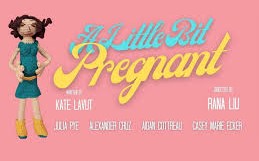
A Little Bit Pregnant
If Dad Girl isn’t sure whether or not she wants a baby, Tasha finds herself pregnant at the start of the four character study A Little Bit Pregnant. “Guess what? I’m not dying” she informs her boyfriend as a way of easing into her announcement. The surprise pregnancy clichés appear early and this show begins a bit stale.
Another young couple lives in the building and they desperately want a child. They cannot get pregnant and are considering other options but their situation truly stings. The tension which then develops gives the story more depth and conflict. “If I were you I would be on cloud nine”. A big revelation will ratchet up the wildly different dynamics between these two couples.
Kate Lavut’s short play ponders the question of whether two people in an imperfect relationship should take the plunge into parenthood. There is a good scene between the newly pregnant Tasha and her male friend whose wife is thus far unlucky. Both of their significant others are fuming with circumstances that are not necessarily under their control. This quiet counseling moment between two friends provides some needed perspective and helps us sympathize with an age old dilemma.

Brokeneck Girls: The Murder Ballad Musical
In a western town located somewhere in America, a mayor’s wife tiptoes into a public tavern. She’s annoyed today because her husband wanted her to perform her “womanly duties”. In this case that means washing the dishes. Harmless man bashing kicks off the female empowerment wild west kitchen sink casserole entitled Brokeneck Girls: The Murder Ballad Musical.
A trio (violin, guitar, banjo) will play tunes throughout this semi-plotted excavation of the evils men do. A young girl named Polly went missing. A wolf attack is blamed. The song suggests otherwise. “Into the grave Polly must go” then “debt to the devil, Willie must pay”. Accountability is a theme well-developed in this show.
The town’s female Sheriff arrives and informs the ladies in the tavern that no one can leave until the coast is clear. Train robber Railroad Bill is in town and up to no good. “Does this mean we can’t go to the hanging tonight?” Willie was apprehended. Sadly these whisky drinkers will miss the fun for their own safety.
There are other murders to consider in this “murder ballad musical”. Some may even involve those inside this tavern. A talking bird is an unfortunate eyewitness and needs to go back in their cage so secrets will not gush forth. A song laments “just wanted a kiss from Henry Lee / little bird what did you see / don’t tell a tale on me”. A disturbingly violent episode is shared but the “violin softened it”. Little snippets of humor do appear in this show which is aggressively all over the place. The racism subplot, for example, is an extraneous add on.
Revenge is a dish best served folksy. The trio asks “kill or be killed” and “which one will it be?” There is a hard but welcome turn from folksy to MAGA level rage. Crimes against women are not something to forgive. The barkeep confesses “sometimes I like to do things that make men die”. By that she means kill themselves or each other.
The balance between tongue-in-cheek humor and bloody dark vengeance flips back and forth. “Let’s see if we can name all the girls that have been murdered since Christmas” precedes a call to “shove men off cliffs”. A harder commitment to blinding rage and brutal retaliation could make Brokeneck Girls a very memorable feminist rant.
Toe tapping along with the trio in between frequent songs diminishes their clearly articulated fury. “Kill all of them that seem dangerous” and “tiny killings on the side are fine” are unapologetically sharp hot-tempered mantras. The final song drives the point home. “There’s no such thing as justice / that’s why we sing this song”.
The New York City Fringe runs through April 21, 2024 at three locations: The Wild Project, 14Y Theater and UNDER St. Mark’s. Most shows are also livestreamed.
www.frigid.nyc/festivals
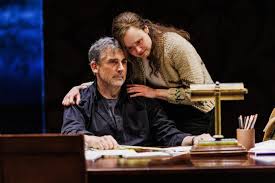


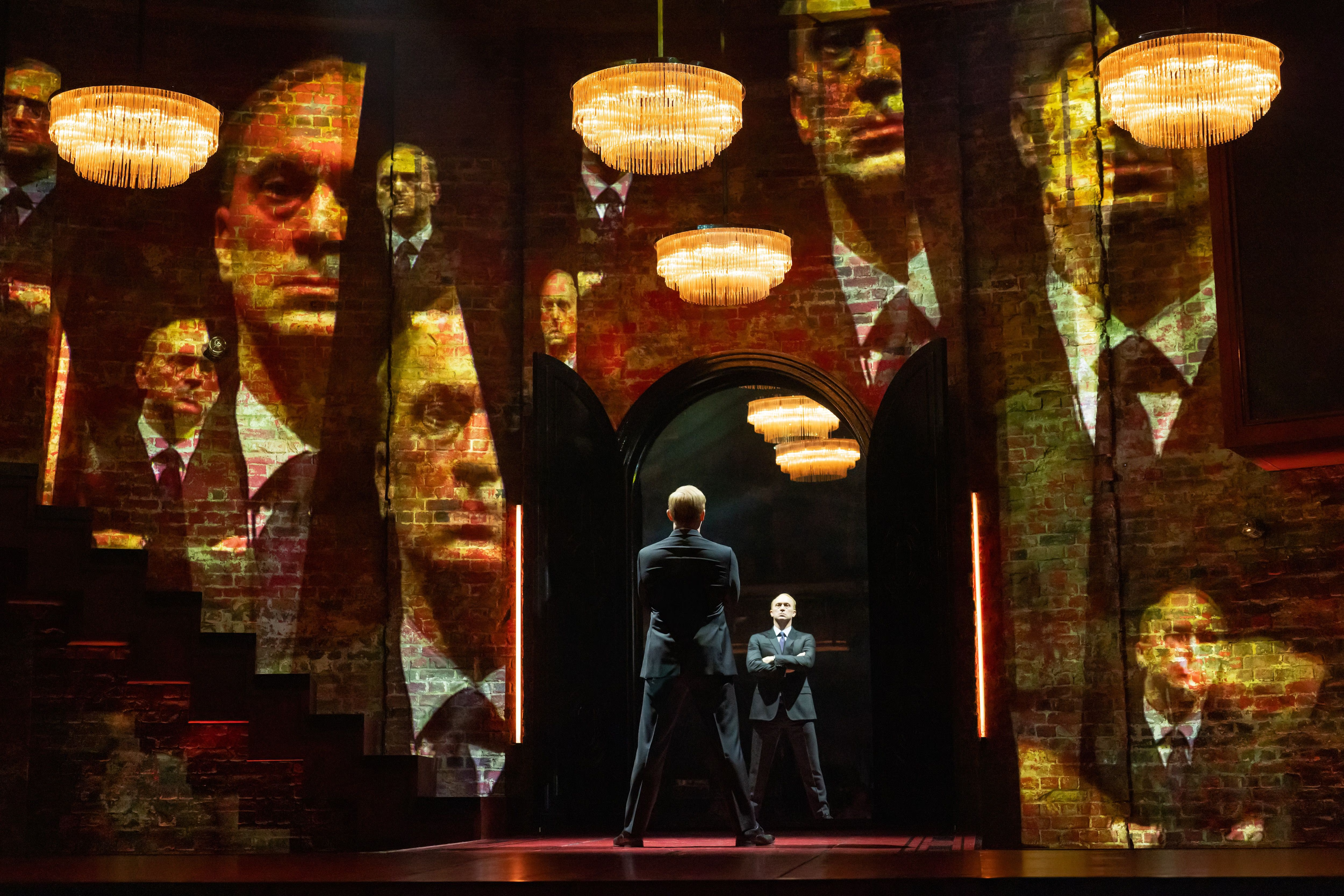

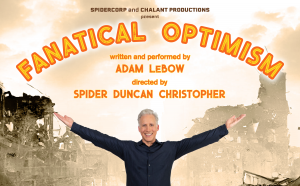





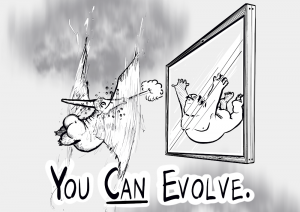
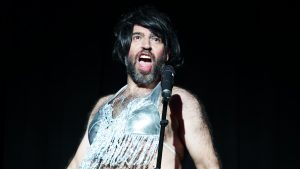

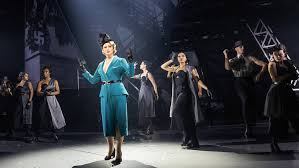


You must be logged in to post a comment.